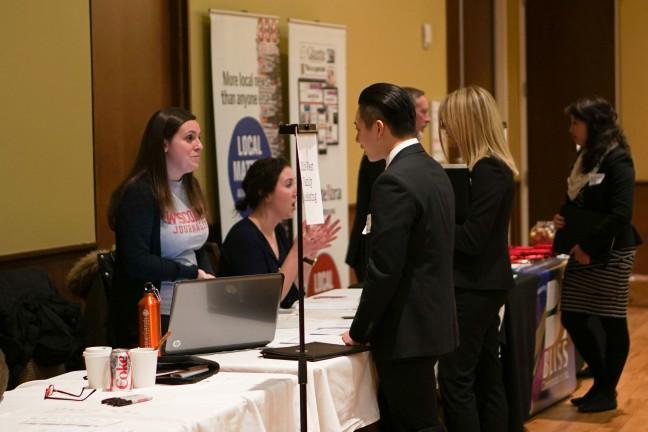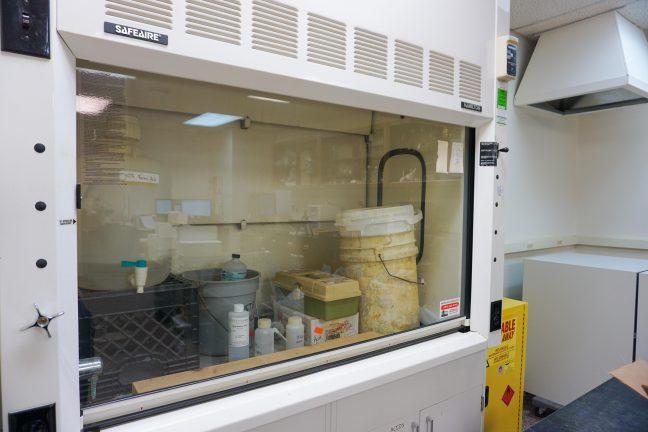A crisis of diversity is afoot. Wisconsin’s Plan 2008 is seriously off track. Soft bigotry lurks behind almost every one of our office walls. ASM should hold hearings and stage sit-ins.
Or not.
Bascom’s master plan to increase “diversity,” ongoing since 2000 and continuing toward its goal of a more inclusive campus over the next three years, is sure to miss one concrete and unaddressed need: diversity of thought.
In a grossly underreported story, two corollary studies were released and chronicled in mid-November detailing the gross misrepresentation of liberal activism as opposed to political activity on behalf of the right and right-of-center.
Reporter John Tierney of The New York Times, reporting from UC-Berkeley, cited two studies in a story outlining the dearth of Republicans on college campuses. Principally, he cites a study authored by Daniel Klein and another academic that surveyed 1000 academics for party identification. As Tierney reports, Klein found a 9-to-1 ratio of Democrats to Republicans at Stanford and Berkeley, among other schools.
Tierney last year gave a keynote address at a seminar for college journalists that this writer attended. He made a passionate and persuasive case against government regulation of small business. Daniel Klein, associate professor of economics at Santa Clara University and the lead author of the study Tierney primarily cites, links articles praising the privatization of transportation systems on his personal website. They found the scenario relevant. Syndicated columnist George Will and the National Review were among the few widely read outlets to spill ink on the studies. Bloggers and talk radio gave the story long-winded play. These reliably conservative outlets find liberal orthodoxy in higher education is relevant.
Establishment media apparently did not. The New York Times ran Tierney’s story on page A23. It was similarly buried in other major publications. The story found very little reception in editorial pages of major mainstream media outlets.
Big academia agrees. This university, certainly, has never made a public nod to indicate a leftward inclination.
A quick examination of our own university faculty’s political-spending habits during the 2004 election cycle yield all one needs to know about our fair campus’ lack of rigorous dissent:
When one visits opensecrets.org, a database of FEC records, and enters “University of Wisconsin” into the database for “occupation/employer,” 575 political contributions are listed. Of that total, nine were contributions to medical association PACs made by UW health professionals. Aside from these, two contributions were made to George W. Bush, two to the Republican National Committee and one to David Magnum. Only two of those contributors list their occupations as “professor.” The other 561 were made to decidedly liberal PACs, Democratic candidates, or Democratic operative groups. Leading recipients were Russ Feingold, John Kerry, Tammy Baldwin and Moveon.org.
A smattering of the donors:
John Wiley, UW Chancellor: $250 to Democracy for America. Nice name, but this is the group spawned by Howard Dean to advance his agenda. Ol’ John may be a fair and politically savvy leader who makes reasoned and deliberate stances, but he’s a lefty.
Katharine Lyall, recently retired UW System president: Her record leaves me with little additional stomach for another story about underpaid top administrators in the UW System. Though she is retired, the UW System was clearly managed by a partisan during Lyall’s tenure: $2,250 to Tammy Baldwin; $500 to Barbara Mikulski, Maryland’s liberal Democratic Senator; $200 to Russ Feingold; and $1000 to the Democratic Congressional Campaign Committee, the organization responsible for electing Democrats to the U.S. House.
Virginia Sapiro, Associate Vice Chancellor for Academic Affairs: $250 to the Democratic National Committee.
Bernice Durand, UW-Madison Associate Vice Chancellor and diversity czar: $700 to Tammy Baldwin; $200 to the Democratic Senatorial Campaign Committee, the organization responsible for electing Democrats to the U.S. Senate.
Though this is by no means scientific evidence, we may have it worse than such paragons of moderation as Stanford and Berkeley. Even if one assumes, dubiously, that health-care-PAC-giving is “conservative” in nature, this university shells out for liberal or left-leaning candidates and causes vs. conservative or right-leaning candidates and causes at an approximately 40-to-1 rate. Move over, party-school rankings — it appears UW has a new trophy to claim.
Neither Plan 2008, nor university hiring practices, nor any other campus initiative makes any provisions for correcting this gross problem. No one making the calls has the courage to call a spade a spade. When the engravers of Bascom’s famous plaque etched our motto into stone generations ago, it’s hard to believe they envisioned a sifter tilting only one way.
And, as Klein reports via Tierney, this trend shows no signs of weakening: Klein found younger faculty members are increasingly more liberal than their soon-to-retire counterparts. This finding anecdotes well with UW-Madison, where the recent squabbling and “job actions” of our neo-socialist TAA indicate the political inclinations of professors-to-be in the social sciences and humanities.
The problem presents itself not so much as a question of outward bias in teaching practices, but rather the determination of what knowledge is worthy of deliberation and presentation. Just as the only journalists and talking heads who reported the findings likely found the data alarming, so too it is with academic knowledge: to be taught or studied in the halls of elite universities anymore, knowledge must be deemed, as Will put it, “relevant.” And what is relevant to so many here on campus — take any major concentration punctuated by the word “studies” — is so often not relevant at the other end of State Street, or two miles south on Park Street. In policy-making circles, ideas are culled just as frequently, if not more so, from privately funded “think tanks” churning out data and analysis on issues of the day. The most prominent tanks are reliably conservative, and up front about it — the same institutions snaring young conservative minds that might otherwise wade into academia. Instead of sitting on the fringes behind the ivy, conservative intellectuals tend more often to generate the ideas that are put into practice.
So what to do about the elephant in the room? Some public words from the Bascoms of the world that, “yes, indeed, lack of intellectual diversity is a problem and we’re committed to doing something about it” would immediately push the story off page A23 and straight to the fore. The rest may simply take care of itself. These are idea factories, after all — and if universities in the past 20 years have proven they can put effort into anything, it’s attempts at becoming inclusive.
The risk of continuance in this rut, for the humanities especially, is further erosion toward being ir-“relevant,” whether the elites are capable of admitting it or not. In the case of public institutions like this one, it may also mean continued sufferance at the hands of state legislatures and the taxpayers. Maybe big media is all too compliant in covering for them, but has anyone seen a major academic study from the social sciences or humanities in the headlines lately?
Eric B. Cullen ([email protected]) is a senior majoring in history.







